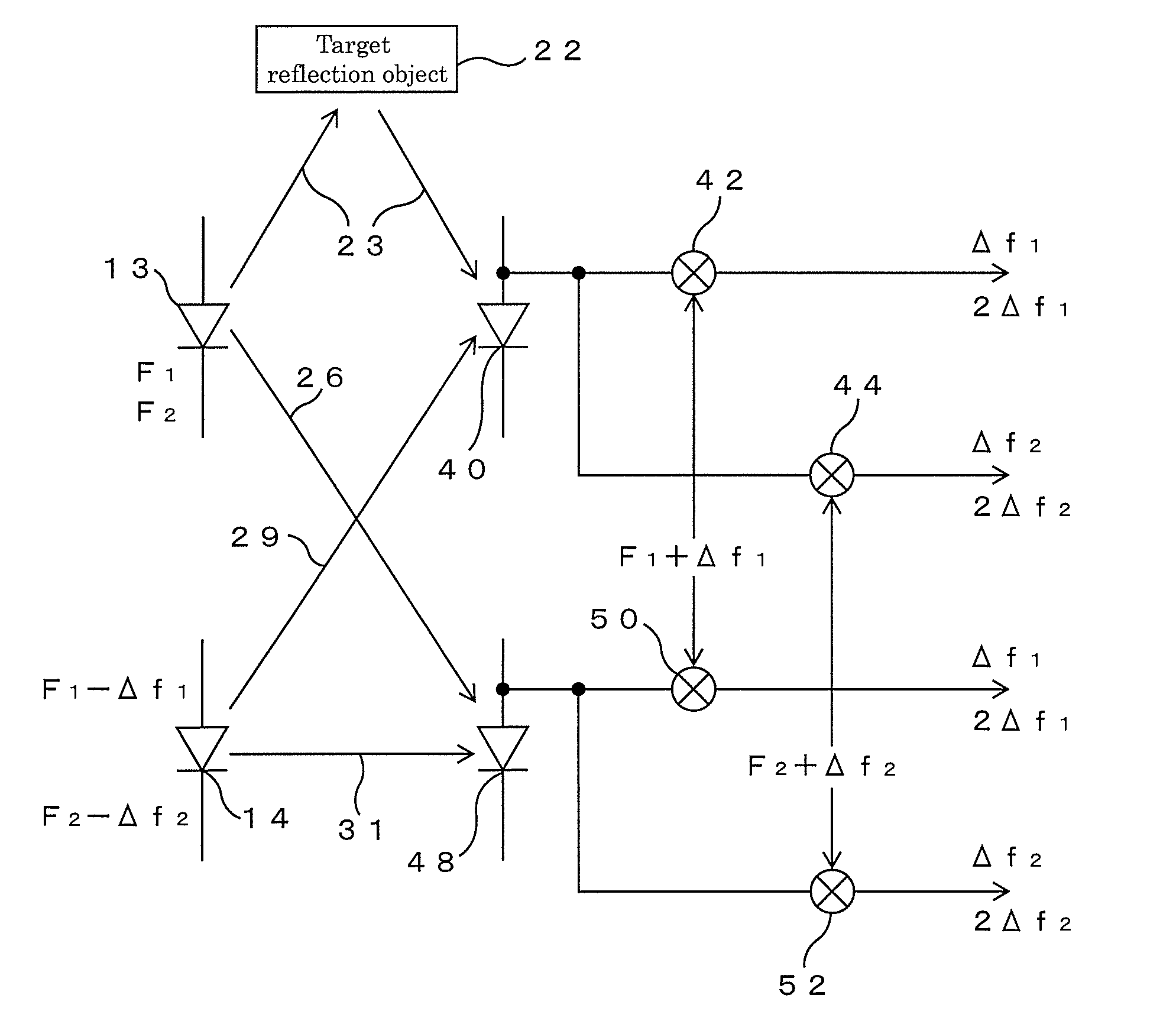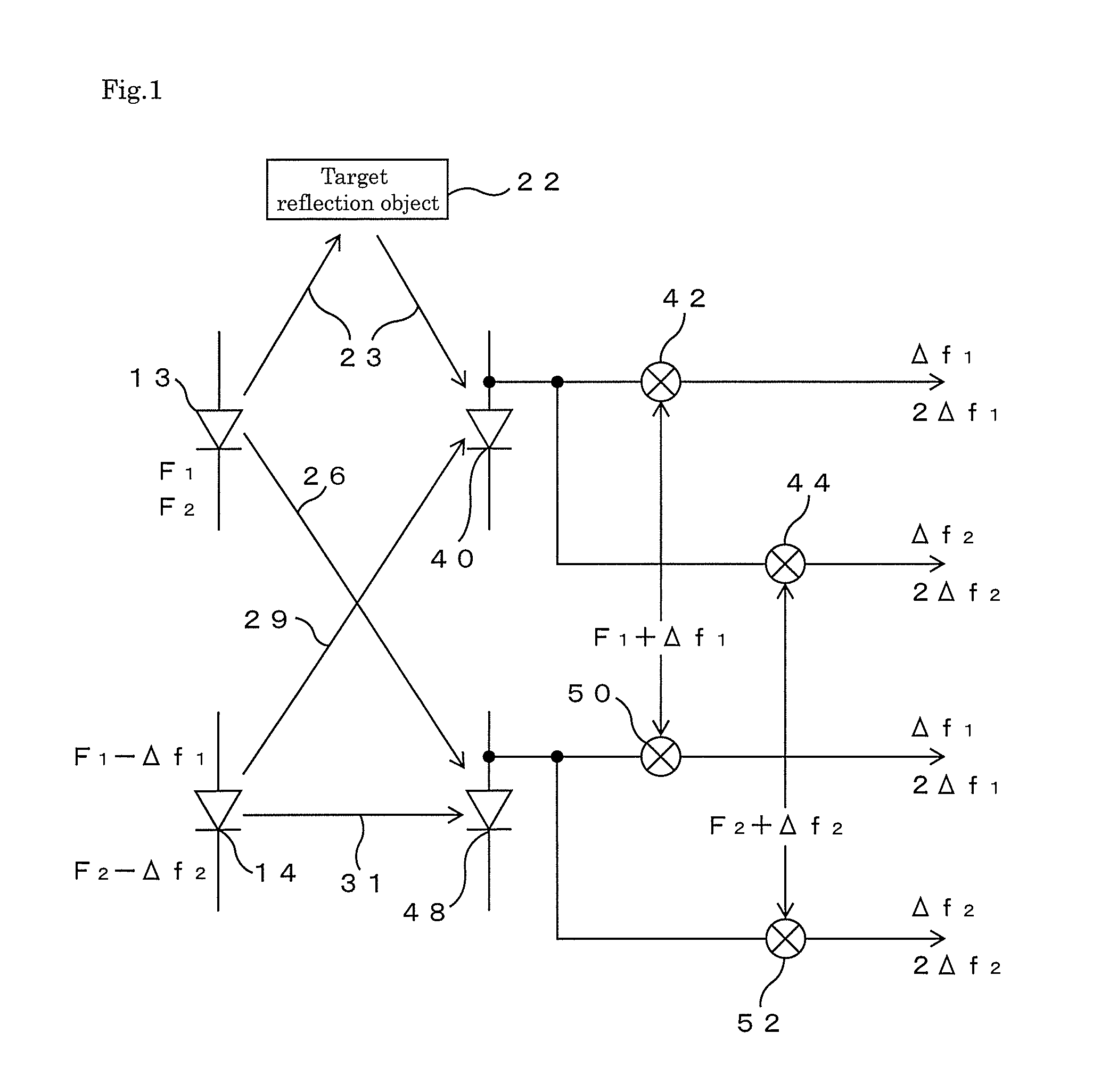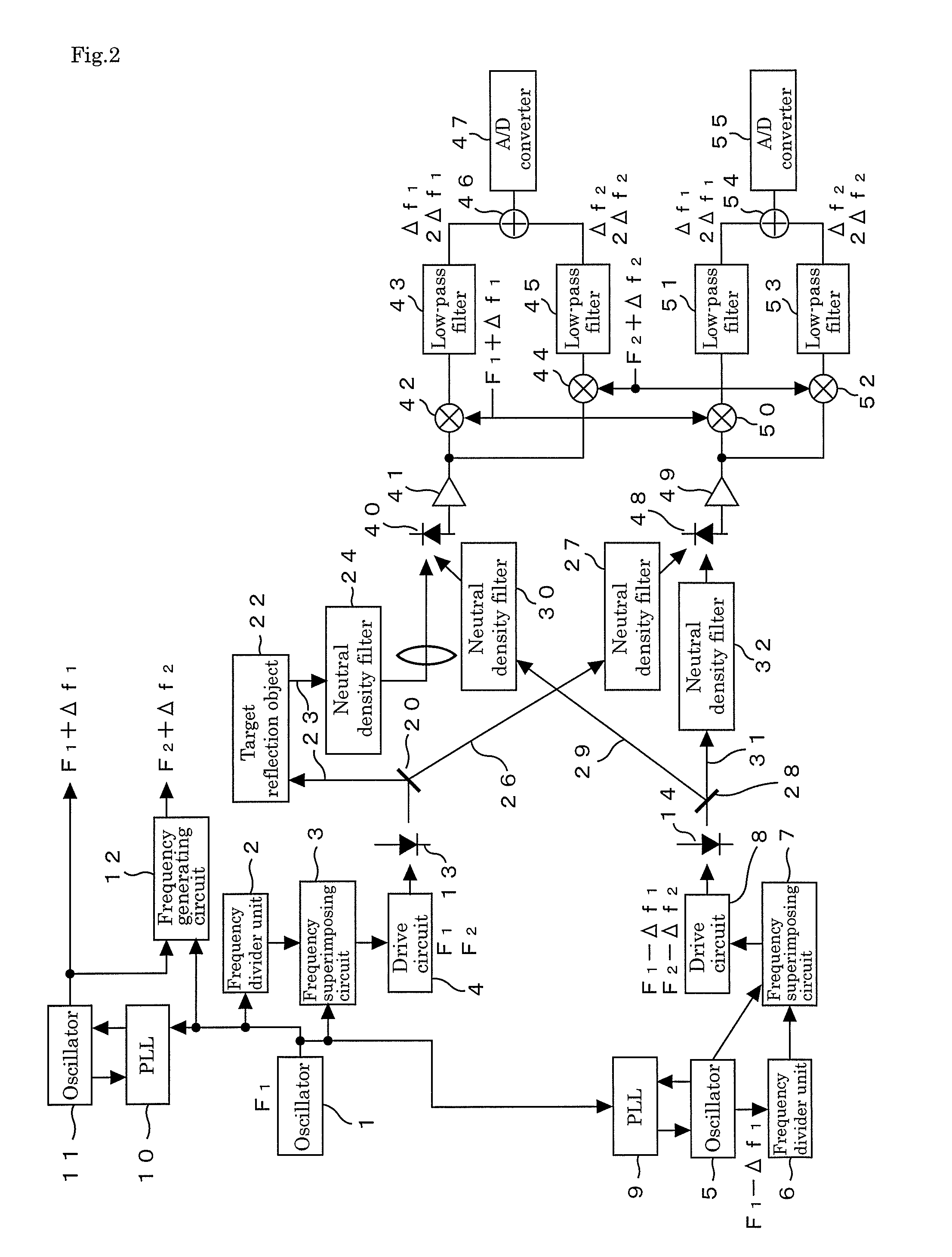Electro-optical distance meter
a technology of optical distance meter and optical plate, which is applied in the direction of distance measurement, height/levelling measurement, instruments, etc., can solve the problems of motion slowed down at low temperature, not only the time of distance measurement, and the temperature phase drift of electrical components can be reduced, so as to reduce the temperature phase drift of electrical components and reduce the cost
- Summary
- Abstract
- Description
- Claims
- Application Information
AI Technical Summary
Benefits of technology
Problems solved by technology
Method used
Image
Examples
Embodiment Construction
[0027]Hereinafter, an embodiment of an electro-optical distance meter of the present invention will be described in detail based on FIG. 1 to FIG. 3.
[0028]First, the main part of this electro-optical distance meter will be described based on FIG. 1. This electro-optical distance meter includes two light-emitting elements 13 and 14 such as laser diodes, emits light modulated with frequencies F1 and F2 (hereinafter, referred to as main modulation frequencies) from the first light-emitting element 13, and emits from the second light-emitting element 14 light modulated with frequencies F1−Δf1 and F2−Δf2 (hereinafter, referred to as adjacent modulation frequencies) close to the main modulation frequencies F1 and F2, respectively. The light emitted from the first light-emitting element 13 is split into two parts, one of these is as a distance measuring light made incident onto a first light receiving element 40 through a distance measuring optical path 23 for traveling to and from a targe...
PUM
 Login to View More
Login to View More Abstract
Description
Claims
Application Information
 Login to View More
Login to View More - R&D
- Intellectual Property
- Life Sciences
- Materials
- Tech Scout
- Unparalleled Data Quality
- Higher Quality Content
- 60% Fewer Hallucinations
Browse by: Latest US Patents, China's latest patents, Technical Efficacy Thesaurus, Application Domain, Technology Topic, Popular Technical Reports.
© 2025 PatSnap. All rights reserved.Legal|Privacy policy|Modern Slavery Act Transparency Statement|Sitemap|About US| Contact US: help@patsnap.com



